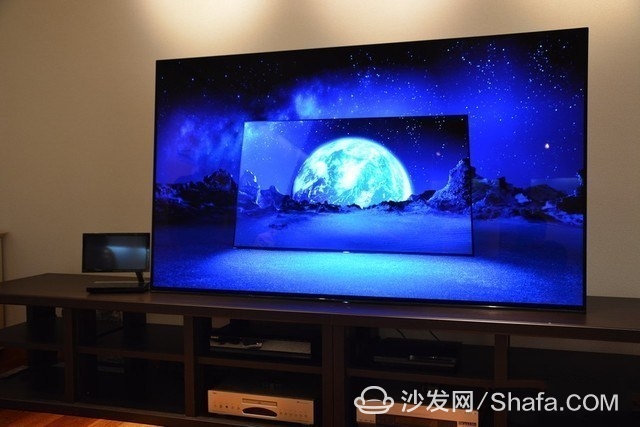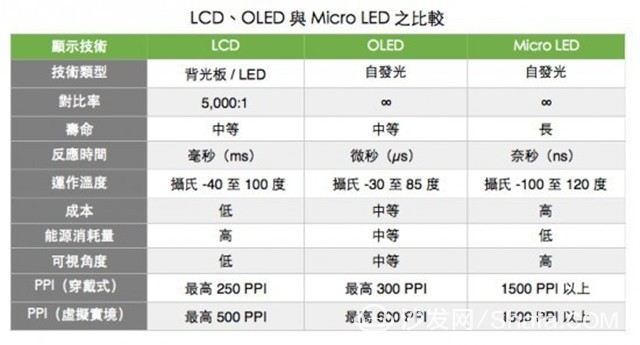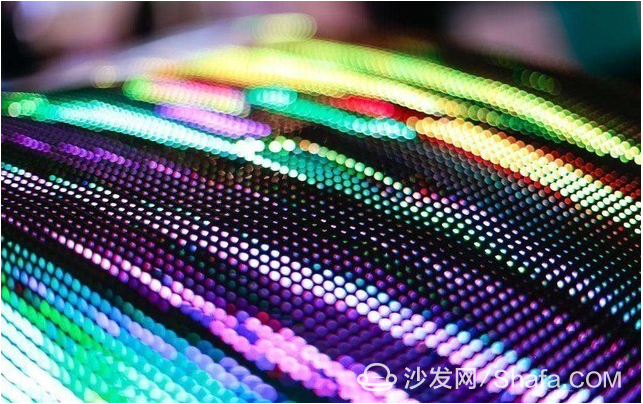
Micro LED technology depth analysis
·Who is for the Micro LED?
To say that the most active people of Micro LED technology, non-Apple is none other than. In fact, the technology of Micro LED really began to enter people's field of vision only after Apple acquired LuxVue Technology. Apple is very good at using its own products to promote display technology, just like the iPhone has been used to promote Retina display technology. The next generation of Apple Watch 3 is said to use the Micro LED display panel, which has also exploded the entire industry.

Apple's third-generation Apple Watch to use Micro LED display?
Sony has always played a pivotal role in core display technology. For Micro LED, Sony itself has been continuously researching and developing. As early as 2012, Micro LED technology was first officially introduced through Sony's new product, the Crystal LED Display. Last year, Sony once again introduced a new generation of Micro LED technology product CLEDIS, which brought shocking visual impact to the industry. In fact, Sony's attitude towards new technologies has always been more cautious. Take OLED technology, Sony has successfully developed OLED TVs in 2007. However, after the OLED industry chain matured this year, it officially officially launched large-size OLED TVs, which is enough to see Sony. Look at the rational attitude of the market. For Micro LEDs, Sony is still the case.

Sony once again introduced OLED TVs after a lapse of 10 years - left is Sony's 11-inch world's first OLED TV, right is Sony's 77-inch OLED A1 TV
The link between Samsung and Micro LED is entirely derived from a "false news." Earlier it was reported that Samsung had bid $150 million to acquire Micro LED technology, but it was rumored after a period of madness. Samsung, as the world's largest display giant, is also a manufacturer of LCD products. If Samsung is not concerned about Micro LED, it is obviously abnormal. However, compared to Samsung’s current focus on QLEDs in large size and OLED in small size, Samsung is still relatively conservative with Micro LEDs.
·Uncovering the mystery of Micro LED
The Micro LED Display is called a micro light-emitting diode display. Its structure is a miniaturized LED array, that is, after the LED structure is designed to be thinned, miniaturized, and arrayed, a large amount is transferred to a circuit substrate, and the physics is reused. Deposition technology creates a protective layer that forms tiny pitch LEDs. Its volume is about 1% of the current mainstream LED size. At the same time, it can also realize that each pixel is individually addressed and driven independently (self-luminous), and the distance from the pixel point is also reduced from the original millimeter level to the nanometer level.

Micro LED technology advantages
Micro LED inherits the characteristics of LED, it has the advantages of low power consumption, high brightness, ultra-high resolution and color saturation, fast response, low energy consumption and long life. According to the data, the power consumption of Micro LED is about 10% of LCD and 50% of OLED. Compared with OLEDs that are also self-luminous, the brightness is 30 times higher and the resolution can reach 1500 PPI (pixel density). From these characteristics alone, the advantages of Micro LED are beyond any doubt.
·Micro LED industrial chain layout
For the layout of the entire industry chain of Micro LED, the Taiwan plant is the most active. For a Micro LED product, the basic structure is a TFT substrate, an ultra-fine LED die, and a driver IC. A common feature of these three is the inheritance of LCDs and LEDs. Taiwan’s ITRI believes that they have the advantages of the entire industry chain. Why then did China and Japan and South Korea, which also have industrial foundations, not show a positive attitude?

Mass transfer process is one of the difficulties of Micro LED
The first point is because mainland China and Japan and South Korea are showing that companies are busy developing OLEDs. Second, the most important point is that Micro LED has a difficult process that is hardly used in the industry—heavy micro transfer, which is also called giant. Quantity transfer. One of the biggest moves in Taiwan's Micro LED industry was the establishment of the “mass transfer†industry alliance with Taiwan’s Industrial Research Institute at the end of last year. This is undoubtedly a big step for Micro LED technology.
Massive transfer: Simply put, on a fingernail-sized TFT circuit board, according to the necessary specifications of optics and electricity, evenly weld three to five hundred or even more red, green, and blue primary color LED tiny crystal grains, and the allowable process failure rate There are hundreds of thousands.
1, a huge amount of transfer problems
From the perspective of the current industrial base, TFT substrates, ultrafine LED die, and driver ICs are not a big problem. However, the huge amount of transfer is indeed a big problem. If Micro LED fails to overcome this problem, it is doomed to be difficult to succeed. In order to avoid the highlighting of the Micro LED, the die must be made very small, so that it is difficult for a small electronic device to be welded on the electrical structure while maintaining the effectiveness of millions of levels.

If the Micro LED can't break through, the massive transfer is doomed to be difficult to succeed.
At the same time, under the circumstance that LCD and OLED are popular, Micro LED must have viable market economy. Although Micro LED can greatly reduce the energy consumption of the display screen, the energy saving effect resulting from this will inevitably lead to an increase in the cost. If the cost cannot be well controlled, the competitive advantage will be hard to realize. In general, a huge amount of transfer must not only overcome the problem of the transfer of a large number of tiny grains, but also ensure that the mature standards of the process level are quickly reached to form a situation and cognition against OLEDs and LCDs.
2, full color puzzle
There is also a big problem with Micro LED, which is the problem of full colorization and the consistency of the emission wavelength. Monochrome Micro LED arrays can be realized by flip-chip packaging and driving IC bonding, but RGB arrays need to transfer red, blue, and green three-color grains, and hundreds of thousands of LED crystal grains need to be embedded. LED crystals have higher requirements for light efficiency, wavelength consistency, and yield. At the same time, the expenditure on color difference caused by LEDs is also a bottleneck that hinders the technology.

Quantum dot full-color light-emitting flow chart based on Micro LED display
At present, Apple continues to invest in R&D of RGB tri-color Micro LED, but it has not solved the problem of yield and cost, which has also made Micro LED research and development progress relatively slow in the past year. Recently, most of the trial products used by the industry belong to a single color. How to overcome this technical bottleneck in the future and develop a cost-competitive full-color Micro LED will be the key to whether Micro LED can enter the mainstream market.
to sum up:
The reason why the display industry can reach today's height is inseparable from the diversified attempts. The Micro LED is bound to be one of them. However, from the perspective of industrialization, Micro LED is obviously not as sensational as many media reports. In today's OLED maturity, seizing the market is a magic weapon to show business survival. While there are many microscopic companies in Micro LED, but they are more as a technical reserve, rather than the best choice. Therefore, it is said that Micro LED will kill LCD and OLED in a few years, all of which sounds like a joke.
Smart TV/box information can focus on smart TV information network sofa butler (http://), China's influential TV box and smart TV website, providing information, communication, TV boxes, smart TVs, smart TV software, etc. Answering questions.
Genki Ippai 1.0 uses high-tech temperature control, food grade pod and high-quality material device. We also upgrade to type-C interface for charging faster. We have developed various flavors for Genki Ippai Pod Systems. Up to 11 flavors provide consumers with more choices. What's more, you can use other brand`s vape pen with our vape pod.
We offer low price, high quality Disposable E-Cigarette Vape Pen,Electronic Cigarettes Empty Vape Pen, E-cigarette Cartridge,Disposable Vape,E-cigarette Accessories,Disposable Vape Pen,Disposable Pod device,Vape Pods to all over the world.
GenkiIppai Pods 1.0,Pod Systems Vape And Smoke,Vape Pod System Device,Pod System Vape Kit,Pod System Mini Vape Pod
ZGAR INTERNATIONAL TRADING CO., LTD. , https://www.oemvape-pen.com